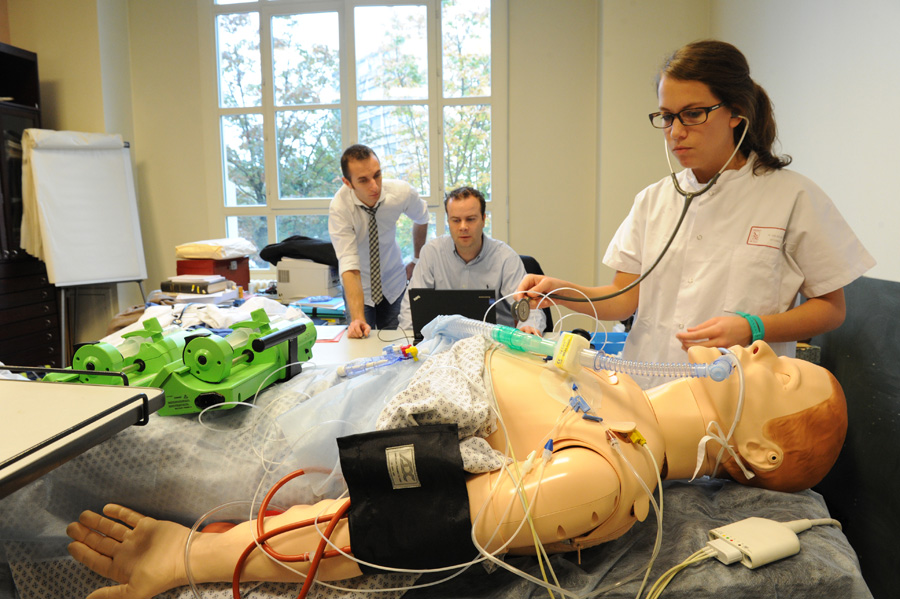At the cutting edge of learning with simulation in the field of healthcare
The Centre Lyonnais d’Enseignement par la Simulation en Santé [the Centre for teaching using simulation in healthcare of Lyon - CLESS] of the Claude Bernard Lyon 1 university enables healthcare students to learn using simulation. Thanks to lifelike dummies and two immersive technical platforms, the students can learn by way of very realistic medical simulations.
Delving into a realistic world
Health is an area where it is particularly difficult to test out one's skills in real life situations, the rule being: "Never try out something for the first time on a patient". There are a lot of things that cannot be taught in lectures. The CLESS platform is totally revolutionary because it enables healthcare students to become aware of their reactions in stress situations and to see how the human aspects and an emergency can affect the protocols in place.The programmed scenarios in the simulation rooms each last around ten minutes. Their scenario is carefully prepared in advance by healthcare professionals. They throw their students into realistic situations so they can take all the various aspects into account: the human element, equipment and sound. They immerse the students in situations where they have to deal with other people, make decisions and learn about leadership within a team context.
These scenarios are then followed by a phase deemed to be one of the most important by teachers, namely that of the debriefing. During this meeting while everything is still fresh in everyone's minds, the students and teachers go over what they have just experienced and analyse all their actions, reactions and exchanges to learn what they need to know. This time for discussion is also backed up with technical resources. The scenarios are recorded from the control panel and then played back during the debriefing.
An impressive set-up
The technical facilities (350m²), equipped like a real emergency care unit (reanimation bed etc.) and highly realistic dummies (infants, adults etc.) are impressively realistic. At the cutting edge of technology, these facilities enable students to fully immerse themselves in the scenario. One-way mirrors are fitted on the external walls of the simulation room so the scenarios can be watched without disturbing the students.The favourite areas in this new centre are emergency and reanimation. The centre can, however, be configured for a whole range of medical situations suitable for an immersive teaching experience.
All the technical platforms can be used for initial training, for continuous professional development, and can also be used in partnership with private companies.
The CLESS platform for Initiatives of Excellence
This technical platform is part of an overarching project, IDEFI (Initiative d’Excellence en Formation Innovantes - Initiative for Excellence in Innovative Training), called Stratégie Apprentissage des Métiers de Santé en Environnement Immersif (Strategic Learning for Healthcare Professions in an Immersive Environment - SAMSEI). The UNF3S and the Val de Grâce healthcare teaching facility are partners of this initiative run by the Hospices Civils de Lyon [Civil hospices of Lyon health authority]. The aim of SAMSEI is to develop and organise transversal training for healthcare professionals using immersive and simulation techniques. Theses participative teaching situations are set up, among other things, by using very high-fidelity simulators such as those of the CLESS, at the faculty of odontology, the school of surgery, the Institut des Sciences Pharmaceutiques [Institute of Pharmaceutical Sciences], as well as the medical education and research unit (UFR) of "Lyon Sud Charles Mérieux", by way of platforms that enable interpersonal situations to be created. Finally, extensive use of Information and Communication Technology for Teaching (TICE) covers the "cognitive teaching and virtual reality" section, which is vital for this method of teaching. The iCAP department does an excellent job providing this service.Photos of practical sessions in the photo library
Published on January 26, 2016



 en
en fr
fr
 es
es

